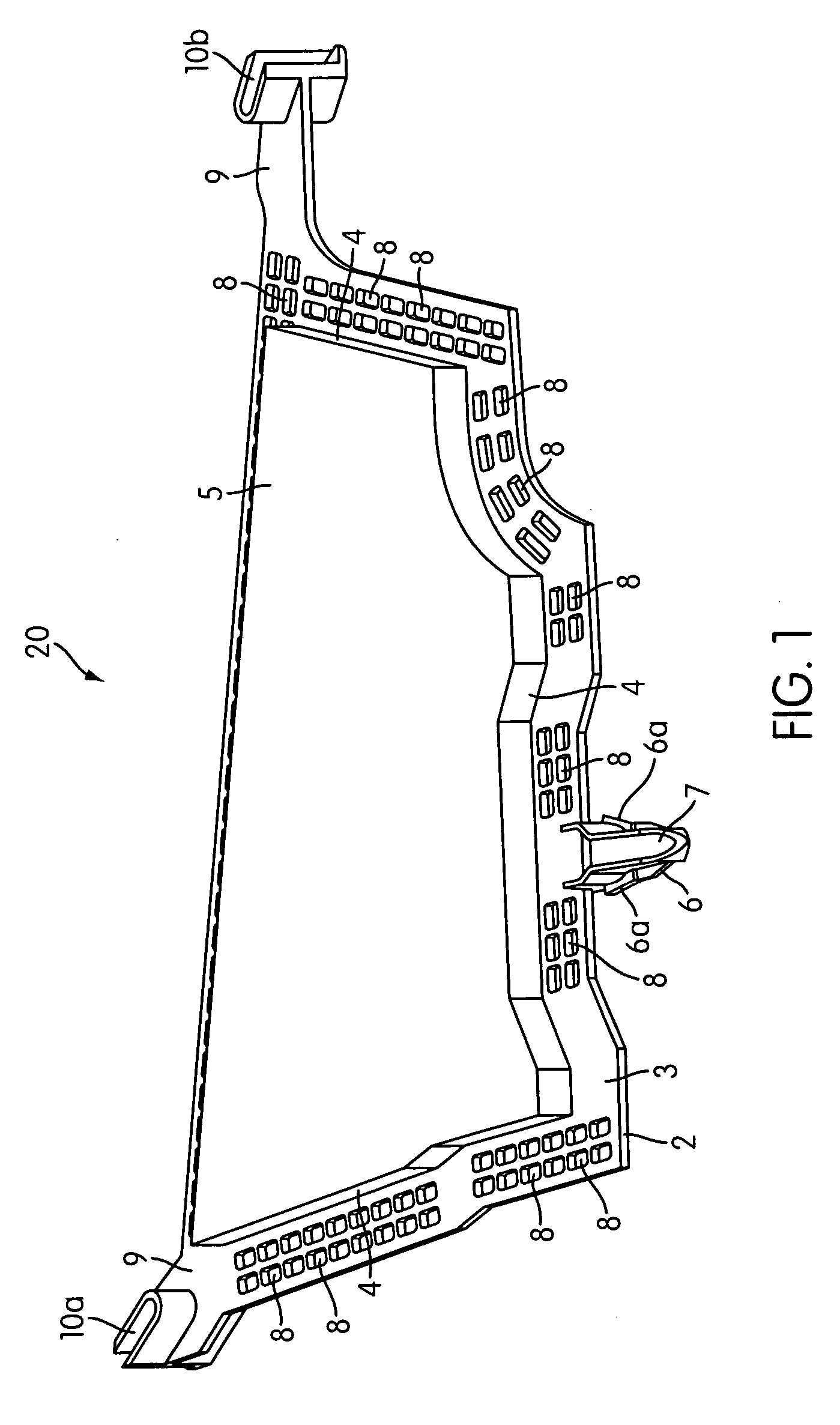Holding jig for a foamable material
a technology of holding jigs and foamable materials, which is applied in the field of holding jigs, can solve the problems of increasing the cost of molds, reducing the area available for “gouging” molds, and the inability to increase the number of molds prepared in this way
- Summary
- Abstract
- Description
- Claims
- Application Information
AI Technical Summary
Benefits of technology
Problems solved by technology
Method used
Image
Examples
Embodiment Construction
[0028] According to one embodiment of the present invention, the holding part (3) of the base body (2) is prepared with a large number of holes (8) that are preferably small and opened in a net or lattice pattern, and thereby a structure is prepared such that even the foamable material (F) in direct contact with the holding part (3) of the base body (2) can be directly heated without the heating from the outside being blocked by the base body (2), the heat-receiving efficiency is improved, and the foaming expansion efficiency of the foamable material is enhanced, so that good filler efficiency can be displayed within the cavity of the hollow structure.
[0029] When there are one or more corners in the transverse cross-sectional shape of the cavity of the hollow structure, it is desirable to provide one or more extensions (9) in the aforesaid base body (2) which correspond to the corners of the cavity of the hollow structure, and to provide approximately U-shaped foaming control walls...
PUM
| Property | Measurement | Unit |
|---|---|---|
| width | aaaaa | aaaaa |
| diameter | aaaaa | aaaaa |
| height | aaaaa | aaaaa |
Abstract
Description
Claims
Application Information
 Login to View More
Login to View More - R&D
- Intellectual Property
- Life Sciences
- Materials
- Tech Scout
- Unparalleled Data Quality
- Higher Quality Content
- 60% Fewer Hallucinations
Browse by: Latest US Patents, China's latest patents, Technical Efficacy Thesaurus, Application Domain, Technology Topic, Popular Technical Reports.
© 2025 PatSnap. All rights reserved.Legal|Privacy policy|Modern Slavery Act Transparency Statement|Sitemap|About US| Contact US: help@patsnap.com



